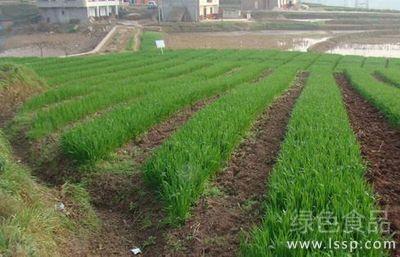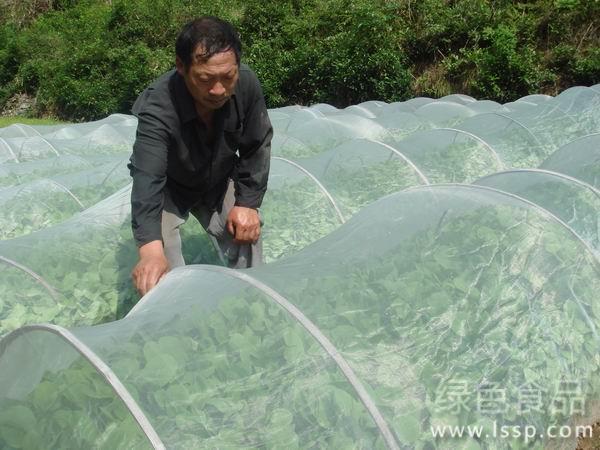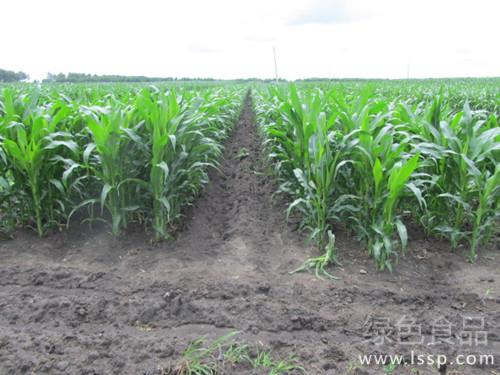Important measures for managing high yield of wheat in winter

Winter wheat
The winter management of wheat is mainly to irrigate frozen water and fertilize. Fine management of wheat in winter is an important measure for high yield in the coming year.
First, promote weak seedlings to strong seedlings: common weak seedlings mainly have the following situations: drought seedlings, deep sowing seedlings, hardened seedlings, de-fatting seedlings, saline-alkali seedlings, fertilizer-burning seedlings, late sowing seedlings and so on. For deep sowing seedlings, it is necessary to clear ridges, remove part of the soil cover, make the thickness of tiller node cover soil shallow or deep, improve soil ventilation, promote development, and make seedlings become strong; hardened seedlings are mainly poor ventilation, root absorption is affected, plant growth is slow, should be timely ploughing and loosening soil, breaking hardening; de-fertilizing seedlings should be fertilized and watered in time; saline-alkali seedlings can be under heavy water pressure and alkali, and then ploughing and loosening soil can be carried out. Fertilizer burning seedlings are mainly caused by the application of immature organic fertilizer or straw returning to the field, so watering measures should be taken; late sowing seedlings should mainly be lack of accumulated temperature before winter, and medium ploughing and loosening soil should be used to increase soil temperature in order to promote their healthy growth.
Second, control prosperous seedlings: one situation is good conditions of fertilizer and water, early sowing, prosperous growth of wheat seedlings, and the other is general soil fertility. due to large sowing quantity, too many basic seedlings, too early sowing, and too high temperature, wheat seedlings grow to form prosperous seedlings. The effective measures to control prosperous seedlings are suppression and deep ploughing, so as to facilitate the growth of new roots. Through these measures, the growth of the aboveground can be basically controlled. Promote the growth of the underground part, at the same time, for prosperous seedlings, it is necessary to postpone the time of pouring frozen water.
Third, prevent dead seedlings: practice has proved that timely pouring frozen water can stabilize the ground temperature, prevent the cold current from invading the wheat seedlings, and protect the wheat seedlings safely through the winter. Preventing drought in early spring is conducive to the cultivation of strong seedlings in spring, crushing bumps and stabilizing the soil is conducive to the growth of wheat seedlings. Frozen water is especially needed for sandy land and loam land, but it is not suitable for low-lying land, clayey land, wet land and late sowing wheat fields. Late sowing wheat fields should still be watered with frozen water when necessary, which can be flexibly mastered according to specific conditions. In principle, there is no tillering and no watering, so as to avoid silting seedlings, affecting the growth of wheat and causing freezing damage. The time of pouring frozen water should be controlled at the time of "dispelling the freezing at night".
Fourth, topdressing winter fertilizer: combined with pouring frozen water and applying winter fertilizer, the amount of fertilizer should not be too large, and it is appropriate to apply 5kg to 10kg per mu.
Winter repression: winter repression has the function of preserving soil moisture, preventing frost and crushing bumps. Winter suppression should be carried out for low-yield fields. However, due to the return of alkali after the suppression of saline-alkali land and the post-suppression of sandy land, alkaline land and sandy land are not suppressed.
- Prev

Key points of vegetable cultivation techniques covered with insect net
Key points of vegetable cultivation techniques covered with insect net
- Next

Main Technical measures of Maize cultivation with large Ridge and double-row plastic Film mulching
Main Technical measures of Maize cultivation with large Ridge and double-row plastic Film mulching
Related
- Fuxing push coffee new agricultural production and marketing class: lack of small-scale processing plants
- Jujube rice field leisure farm deep ploughing Yilan for five years to create a space for organic food and play
- Nongyu Farm-A trial of organic papaya for brave women with advanced technology
- Four points for attention in the prevention and control of diseases and insect pests of edible fungi
- How to add nutrient solution to Edible Fungi
- Is there any good way to control edible fungus mites?
- Open Inoculation Technology of Edible Fungi
- Is there any clever way to use fertilizer for edible fungus in winter?
- What agents are used to kill the pathogens of edible fungi in the mushroom shed?
- Rapid drying of Edible Fungi

